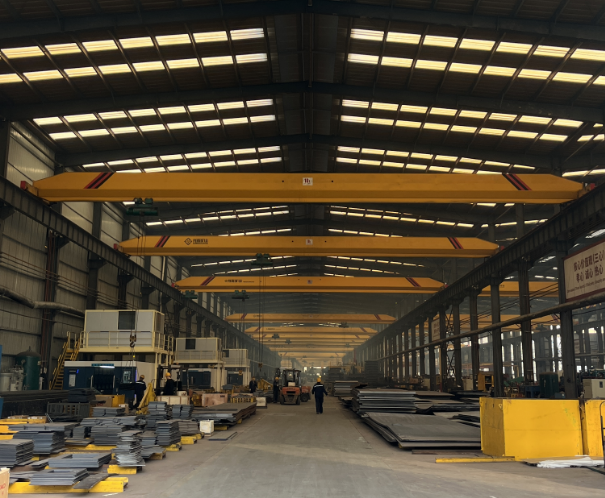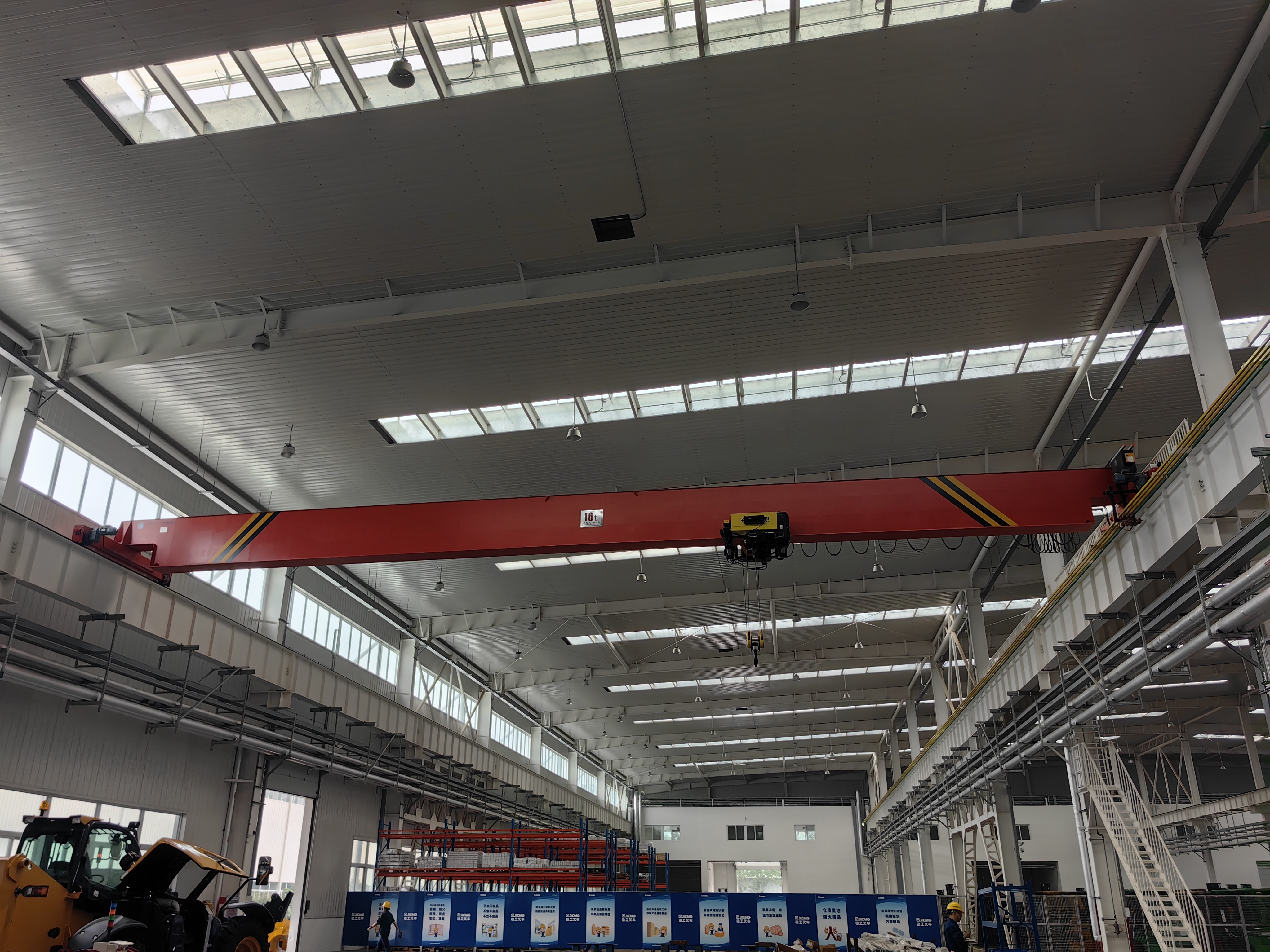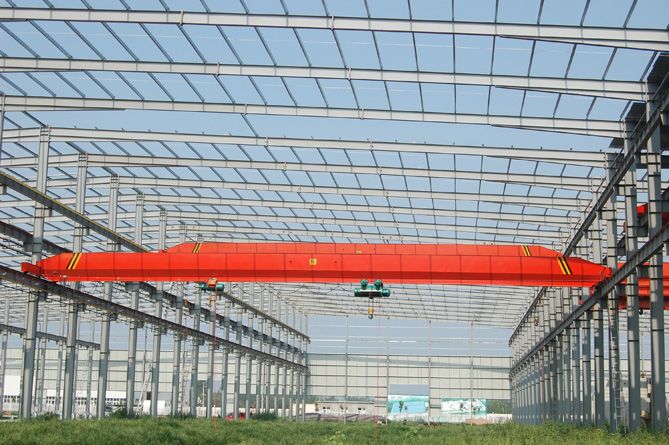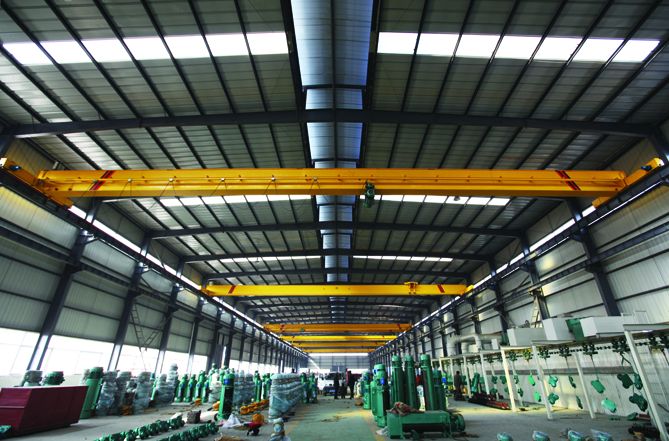1. Common Types of Crane Shaking & Associated Risks
Horizontal Sway: Trolley/crab lateral movement along rails
Vertical Oscillation: Hook or load bouncing vertically
Compound Vibration: Multi-directional irregular motion
Critical Hazards:
✔ Accelerated rail wear (up to 300% faster degradation)
✔ Structural fatigue cracks (high-stress zones in main girders)
✔ Positioning errors (disrupts automated production lines)

2. Five Primary Causes and Targeted Solutions
2.1 Track Installation Defects (40% of Cases)
Key Indicators:
Rail joint gaps >2mm
Horizontal deviation exceeding 1/1000 of span (per ISO 8306)
Loose rail clamp bolts
Remedial Actions:
Laser Alignment: Use total stations for rail straightness verification (±0.5mm/m tolerance)
Seam Welding: Apply K-bevel welding + grinding at joints
Bolt Tensioning: Follow diagonal tightening sequence (3-stage torque per GB/T 3811)
2.2 Drive System Desynchronization (25% of Cases)
Typical Failures:
Uneven gear wear in dual-drive units
Incorrect VFD acceleration parameters
Encoder signal interference
Corrective Measures:
Dynamic Balancing: Measure motor torque variance with vibration analyzers (<5% deviation allowed)
VFD Optimization:
Acceleration time = 3-5 × rated speed
Enable S-curve soft start/stop
Signal Protection: Use shielded twisted-pair cables + isolated grounding (≤4Ω resistance)
2.3 Structural Rigidity Deficiencies (20% of Cases)
Compliance Benchmarks:
Main girder vertical stiffness ≤ Span/800
End beam horizontal deflection ≤ Length/2000
Reinforcement Methods:
Diagonal Bracing: Weld 45° gusset plates at girder-end beam junctions
Flame Straightening: Correct main girder sagging (≤3mm per adjustment)
Wheel Upgrades: Install flanged double-rim wheels (rim height ≥25mm)

2.4 Load-Induced Resonance (10% of Cases)
Physics Principle:
Crane motion frequency matching load-pendulum natural frequency triggers resonance.
Anti-Sway Tactics:
Active Control Systems:
Deploy ±0.1° precision tilt sensors
Implement real-time PID speed adjustment
Mechanical Dampers:
Install nylon anti-sway rollers (1.2× spreader width spacing)
Use 8-strand non-rotational wire ropes
2.5 Operator Errors (5% of Cases)
Common Mistakes:
Jerky starts/stops (>0.5m/s² acceleration)
Angular hoisting (>3° off vertical)
Overloading (>110% rated capacity)
Training Protocols:
Three-Phase Operation:
Ramp-up: 0→30% speed over 2 sec
Steady-state: Constant velocity
Ramp-down: Begin deceleration at 90% travel distance
Mandatory Load Limiters: TSG Q0002-compliant electronic overload protectors

3. Preventive Maintenance Checklist
| Frequency | Task | Tool/Standard |
|---|---|---|
| Daily | Rail bolt tension, wheel wear | Calibrated torque wrench |
| Monthly | Girder deflection, motor insulation | Laser rangefinder, megohmmeter |
| Annual | Structural stress tests, control updates | Strain gauges, PLC firmware |
4. Advanced Anti-Shaking Innovations
Magnetic Active Damping: Counteracts sway via electromagnetic force (Ideal for precision workshops)
Digital Twin Simulation: Pre-test crane operations virtually (90% faster commissioning)
CFRP Girders: Carbon fiber-reinforced beams (35% lighter, 20% stiffer for long spans)


